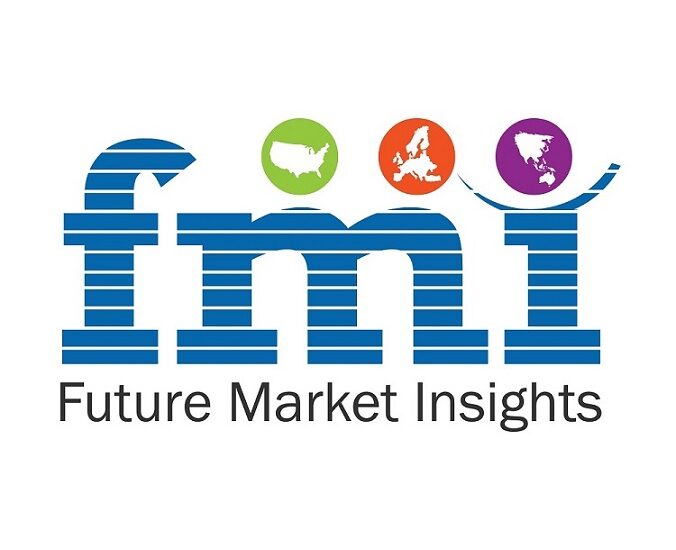The global synthetic camphor market is predicted to be worth US$ 322.3 million by the end of 2018 and US$ 571.6 million by the end of 2028, expanding at a 5.9% CAGR during the forecast period. Between 2018 and 2028, the global market is expected to generate incremental opportunity worth US$ 249.3 Mn.
Traditionally, the camphor tree’s secretions are used to make synthetic camphor. Camphor made through chemical synthesis is referred to as synthetic camphor. Turpentine oil is one of the most significant raw materials used in the production of synthetic camphor. Two product categories that differ only in terms of purity make up synthetic camphor.
According to the latest Future Market Insights (FMI) report, the volume sales of synthetic camphor are likely to exceed 36 thousand tons in 2019. Pharmaceutical industry has been a leading end-user of synthetic camphor, upheld by ongoing research activities on extending application scope of synthetic camphor in medicinal formulations.
Obtain a Sample Copy of Report @ https://www.futuremarketinsights.com/reports/sample/rep-gb-8704
The FMI report also tracks the synthetic camphor market for the forecast period 2018 to 2028. According to the report, volume sales of synthetic camphor is likely to register 3.0% CAGR through 2028.
Pharma-grade synthetic camphor is extensively used in various topical analgesic products such as ointments, oils, gels, and chest-rubs. These pharma-grade synthetic camphor for topical pain management products are witnessing significant demand owing to consumer preference for self-medication, undergird by enhanced and easy accessibility of OTC products. According to the report, pharma-grade synthetic camphor is projected to account for more than 50% volume share in 2019 in the synthetic camphor market.
Pharma-grade synthetic camphor sales are also significantly driven by growing demand for private-labelled camphorated medical products. For example, private labelled analgesic products have gained increased popularity in the US, as they are devoid of FDA approval, and witness strong promotion from retailer businesses.
A key factor restricting adoption is regulations on the use of synthetic camphor in pharmaceutical products, such as the US FDA’s classification of certain camphorated oil products would require patients to hold doctor’s prescription for consumption. Moreover, rising costs of raw materials such as turpentine oil is emerging as a key concern for manufacturers producing pharma-grade synthetic camphor.
Gains Remain Strong from Synthetic Camphor Sales in Plasticizer Production
Synthetic camphor continues to witness robust adoption in plasticizer production, which prevails as a critical component for paint and coating formulations. Additionally, demand for plasticizers in PVC and cellulose fiber production, has significantly underpinned sales of synthetic camphor. The study estimates sales of synthetic camphor in plasticizer production to surpass 13 thousand tons in 2019.
Rise in the construction sector, along with increasing demand for renovation and maintenance of existing structures, continues to drive demand for plasticizers in flooring and wall covering applications. Additionally, remarkable demand for plasticizers in flexible Polyvinyl Chloride (PVC) manufacturing, and to soften plastics used in wall covering and flooring, will remain a key sales determinant of synthetic camphor.
Request Discount @ https://www.futuremarketinsights.com/request-discount/rep-gb-8704
East Asia to Hold Pole Position in Synthetic Camphor Market
According to the FMI report, East Asia is likely to remain lucrative in the synthetic camphor market. In East Asia, China is expected to account for the highest sales of synthetic camphor, surpassing 12 thousand tons in 2019. Owing to the presence of a large number of pharma-grade synthetic camphor manufacturers in China, the country is witnessing the growing demand for synthetic camphor.
Growing overseas demand for synthetic camphor and significant growth in Chinese gum turpentine industry are the key factors influencing the market growth in the country. Additionally, with the development of Chinese gum turpentine derivatives such as synthetic camphor and synthetic borneol, overseas companies are eyeing use of these derivatives over gum turpentine.
Majority of the pharma-grade synthetic camphor manufacturers are concentrated in China and India, exporting their products to Europe and the US. Due to the availability of raw materials and synthetic camphor on a large scale in China and India, global manufacturers of camphor and other related chemical are focusing on expanding their businesses in East Asia.
Key Players
Some of the players reported in this study include Fujian Qingsong Co. Ltd., Mangalam Organics Limited, Suzhou Youhe Science and Technology Co., Ltd., Saptagir Camphor Limited, Oriental Aromatics Limited, Wuzhou Huangpu Chemical Pharmaceutical Co, Ltd., Kanchi Karpooram Limited, Taiwan Tekho Camphor Co., Ltd., Caesar & Loretz GmbH, Merck KGaA, Recochem Inc., Xiamen Hisunny Chemical Co., Ltd, SkyRun Industrial Co., Ltd, Shanghai Huayi Group Huayuan Chemical Co., Ltd., Fengchen Group Co., Ltd, Aldon Corporation, Prinova LLC, Teloonchem International Co., Limited, among others.
Feel free to ask your queries @ https://www.futuremarketinsights.com/ask-question/rep-gb-8704
Synthetic camphor Market: Segmentation
Grade
- Technical Grade Synthetic Camphor
- Pharma Grade Synthetic Camphor
Application
- Pharmaceuticals
- Personal Care
- Plasticizer
- Flavour & Fragrance
- Others
Region
- North America
- Latin America
- Europe
- South Asia
- East Asia
- Oceania
- Middle East & Africa
About Future Market Insights (FMI)
Future Market Insights (ESOMAR certified market research organization and a member of Greater New York Chamber of Commerce) provides in-depth insights into governing factors elevating the demand in the market. It discloses opportunities that will favor the market growth in various segments on the basis of Source, Application, Sales Channel and End Use over the next 10-years.
Contact:
Unit No: 1602-006
Jumeirah Bay 2
Plot No: JLT-PH2-X2A
Jumeirah Lakes Towers
Dubai
United Arab Emirates
LinkedIn| Twitter| Blogs
For Sales Enquiries: sales@futuremarketinsights.com



